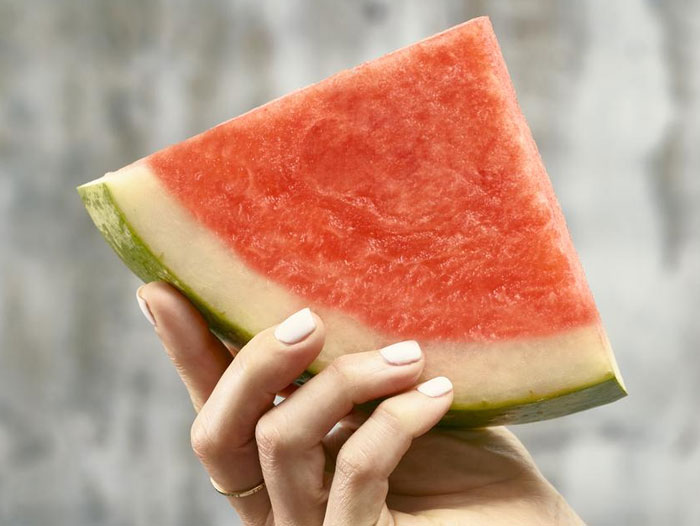Watermelon Board Sharpens its Focus With Comprehensive Research
April 26, 2019 | 3 min to read

Winter Springs, Fl. – The National Watermelon Promotion Board (NWPB) is on a mission: Sell more watermelons.
“The market is ripe for innovation,” observes Jesse Wiggins, NWPB’s board president. The Texas born, fourth-generation watermelon farmer who brings his millennial point of view to the watermelon industry says the board is investing in comprehensive research in 2019 to uncover and create new opportunities.
“Research has always served as the backbone of NWPB’s promotional programs, but we’re stepping it up,” he explains. “We’re looking holistically at consumer behavior, nutrition research, retail data and menu trends to market watermelon in different niches.”
Nutrition research, in particular, is ramping up, Wiggins notes. Studies will look at watermelon’s potential effects on weight loss and digestive health; impacts on post-exercise recovery; compounds in watermelon flesh, rind and seeds; and effects of watermelon juice to support cardiometabolic health.
According to Stephanie Barlow, NWPB’s senior director of communications, “Investing in nutrition studies will give us new data to inform messages that can be shared with influencers, like dietitians and media, to encourage watermelon consumption in specific recommendations.”
NWPB also is leveraging the plant-based trend. “Plant-based plates are a culinary mega-trend we can use to position watermelon for foodservice,” says Megan McKenna, NWPB foodservice director. NWPB will participate in The Culinary Institute of America’s Global Plant-Forward Culinary Summit to get watermelon in front of food distributors and restaurant operators who are implementing these trends. “Additional foodservice outreach, research and tools are underway to get more watermelon on menus year-round.”
Barlow continues, “We need to market watermelon in a way that captivates and inspires modern audiences.” NWPB consumer research shows more than two-thirds of the population enjoy the taste of watermelon, which the board sees as an opportunity. Wiggins adds, “We’re celebrating watermelon for what it is: a deliciously sweet, juicy fruit that has come to symbolize happiness and a carefree spirit in pop culture.” Case in point: watermelon graphics showing up on countless apparel, tote bags, pool floaties and beverage containers.
“People want to have a personal, emotional connection with their product choices,” says Barlow. “We’re turning watermelon into that experience with our new ‘Back to Basics’ consumer campaign.” The campaign will deliver easy applications that are big on flavor, as well as demonstrate watermelon’s journey from field to table. Wiggins adds, “Today’s consumers want to know where their fruit comes from. They enjoy seeing the face of the farmer and knowing families and young people are devoted to growing watermelon.”
Through NWPB’s retail program, merchandising representatives and watermelon queens will conduct in-store activations that promote flavor pairings, handling and selection information, and ideas for using the whole watermelon. NWPB also will be launching a new retail kit to provide resources and tools for in-store employees.
“The market is shaping up nicely, and the growers will be really happy as long as watermelons keep moving,” Wiggins says.
About National Watermelon Promotion Board
The National Watermelon Promotion Board (NWPB), based in Winter Springs, Florida, was established in 1989 as an agricultural promotion group to promote watermelon in the United States and in various markets abroad. Funded through a self-mandated industry assessment paid by more than 1,500 watermelon producers, handlers and importers, NWPB mission is to increase consumer demand for watermelon through promotion, research and education programs.
Watermelon packs a nutritious punch, with each serving providing an excellent source of Vitamin C, a good source of Vitamin B6, and a delicious way to stay hydrated, with only 80 calories. Watermelon consumption per capita in the United States was an estimated 15.8 pounds in 2018. Watermelon consumption in the United States was approximately 5.2 billion pounds in 2018. The United States exported an additional 325.4 million pounds of watermelon. For additional information, visit www.watermelon.org.
